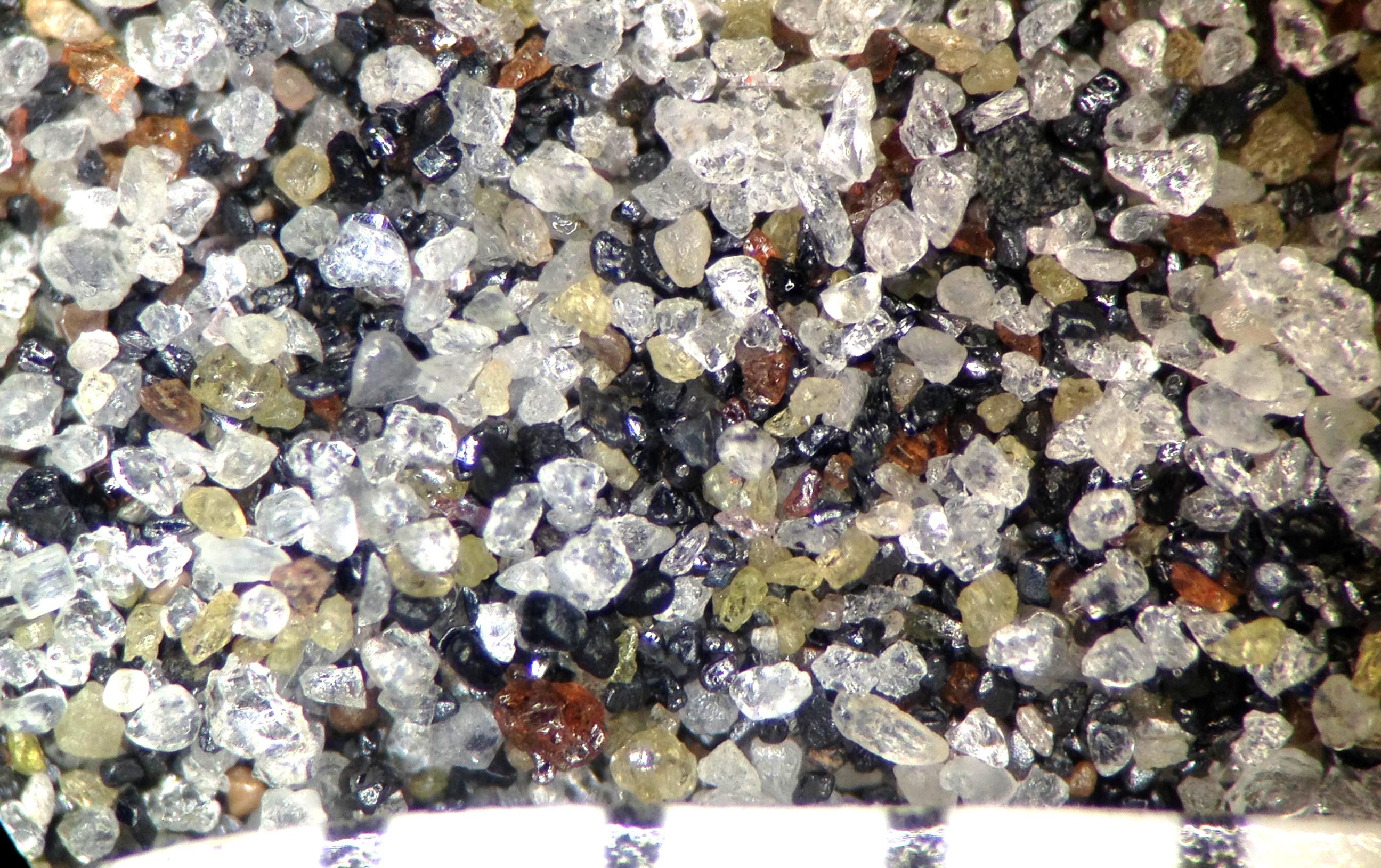Sand from Hilton Head, SC
This is a sample of the sand after passing it through a #80 US seive (smaller than 180 micrometers). It is predominantly heavy minerals. This is also the sand that makes up the dark patterns in the sand on the beach. The black grains are predominantly magnetite. The pink grains are garnet. The dark orange grains are rutile. The yellow are tourmaline. Some of the colorless grains are zircon.
Macrophotograph
Welland, Michael, SAND: THE NEVER ENDING STORY, University of California Press, 2009.
http://www.microscopy-uk.org.uk/mag/indexmag.html?http://www.microscopy-uk.org.uk/mag/artjun01/clsand.html
(Good Information on the microscopy of sand, Great site for more information on microscopy in general)
http://www.scientificamerican.com/article.cfm?id=a-grain-of-sand-natures-secret-wonder
(Good Information on Sand with links to more information on sand)
http://www.sciencelive.org/component/option,com_mediadb/task,play/idstr,Open-feeds_fsc_exploring_sedimentary_processes_fsc02_02_m4v/vv,-2/Itemid,97
(Brief, very informative video on what can be learned from the shape of a sand grain.)
Definition/Function:
Significance in the Environment:
Characteristic Features:
Associated Particles:
References:
Greenberg, Gary, A GRAIN OF SAND: NATURE'S SECRET WONDER, Voyageur Press, 2008.Welland, Michael, SAND: THE NEVER ENDING STORY, University of California Press, 2009.
http://www.microscopy-uk.org.uk/mag/indexmag.html?http://www.microscopy-uk.org.uk/mag/artjun01/clsand.html
(Good Information on the microscopy of sand, Great site for more information on microscopy in general)
http://www.scientificamerican.com/article.cfm?id=a-grain-of-sand-natures-secret-wonder
(Good Information on Sand with links to more information on sand)
http://www.sciencelive.org/component/option,com_mediadb/task,play/idstr,Open-feeds_fsc_exploring_sedimentary_processes_fsc02_02_m4v/vv,-2/Itemid,97
(Brief, very informative video on what can be learned from the shape of a sand grain.)


